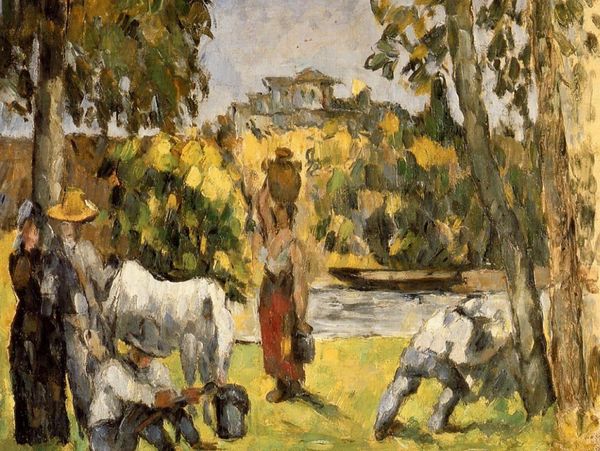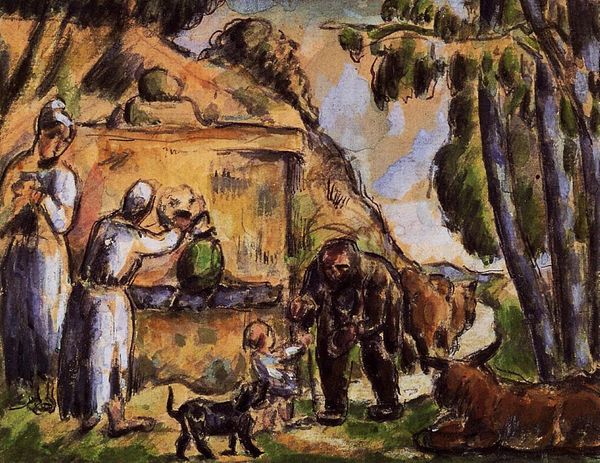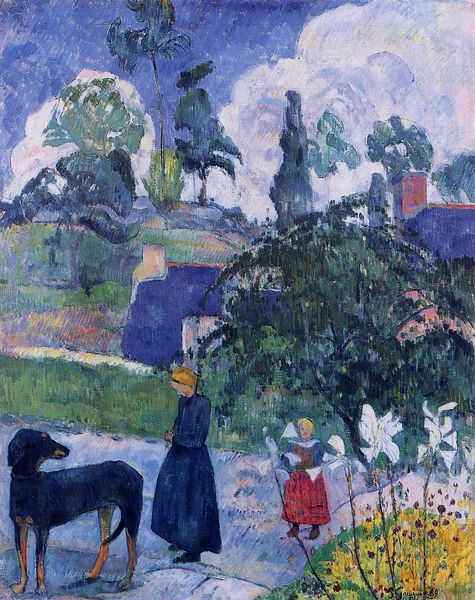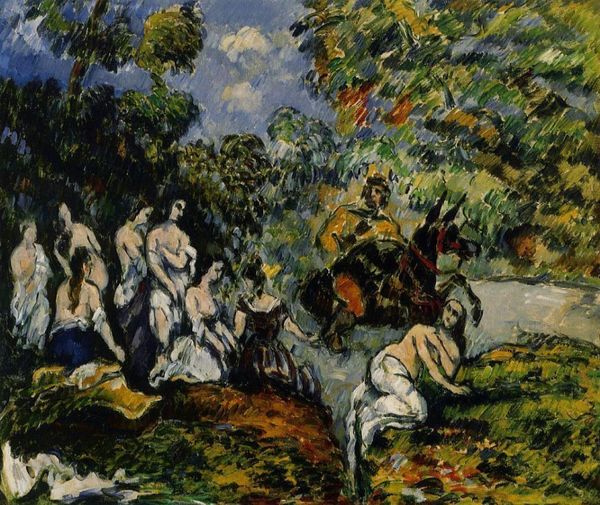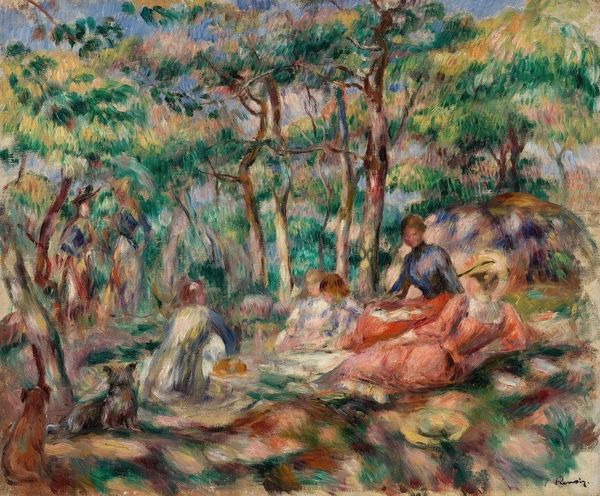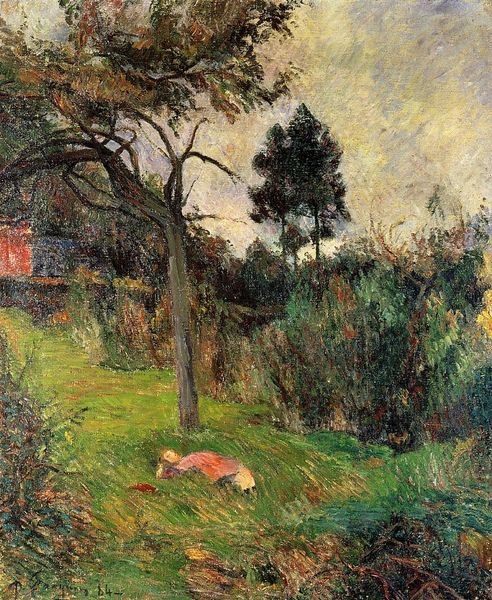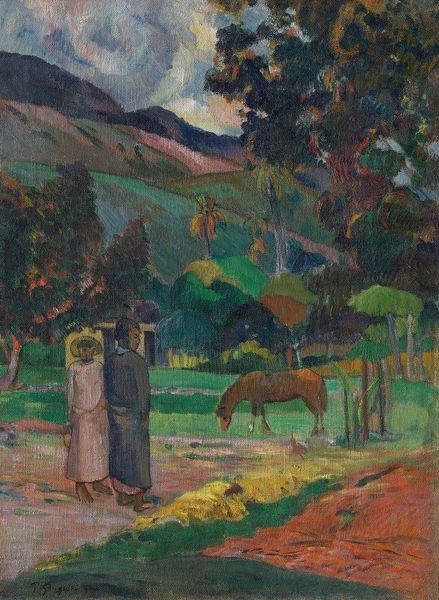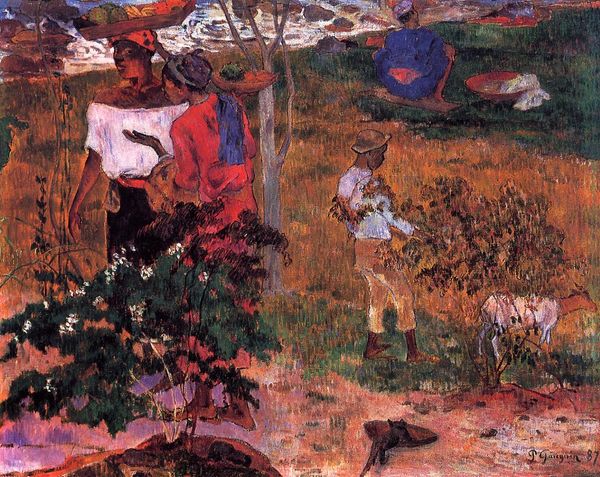
Copyright: Public domain
Paul Cézanne painted 'The Fountain' with oil on canvas, capturing a rural scene indicative of 19th-century French life. The painting presents a tableau of labor and domesticity, with women at work by the fountain, and men tending to animals, a gentle illustration of the era’s gendered division of labor. Cézanne, often working outside the Parisian art scene, had a unique focus. His emotional connection to his provençal home shaped his work. "Painting from nature is not copying the object; it is realizing one's sensations," he once said. This intimate connection to the land is palpable here. Note how the bodies are depicted in relation to their tasks and to each other. 'The Fountain' departs from traditional romanticized depictions of rural life, instead offering a more grounded portrayal. Cézanne’s work resonates with an intimate understanding of the social dynamics within the countryside. It prompts us to reflect on our own relationships to the spaces we inhabit and the labor that sustains us.
Comments
No comments
Be the first to comment and join the conversation on the ultimate creative platform.
